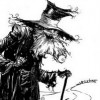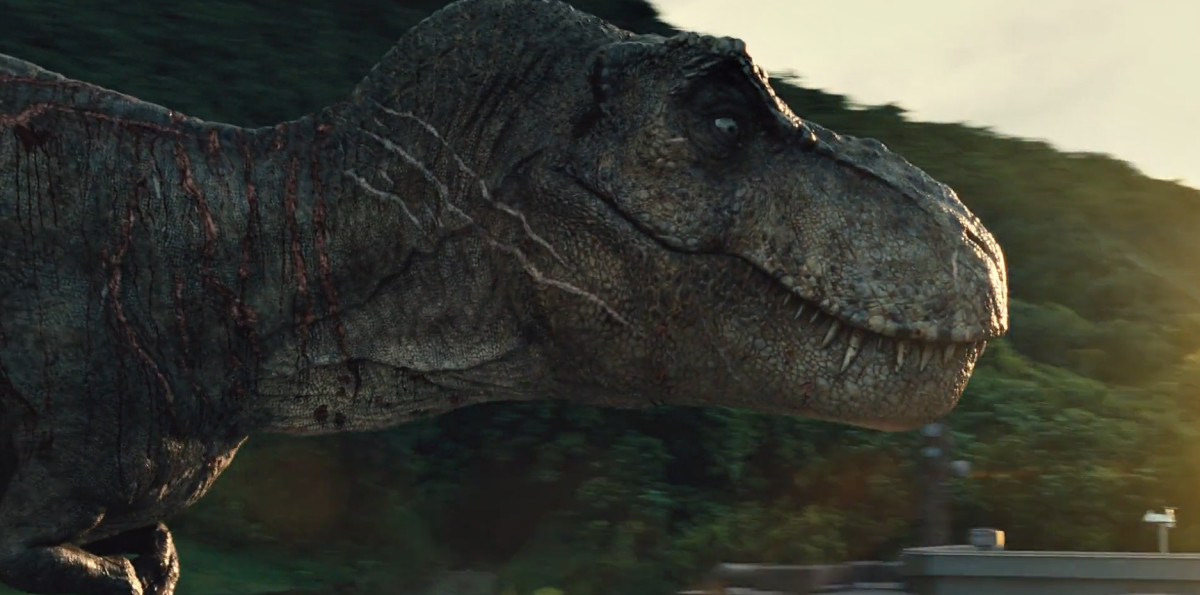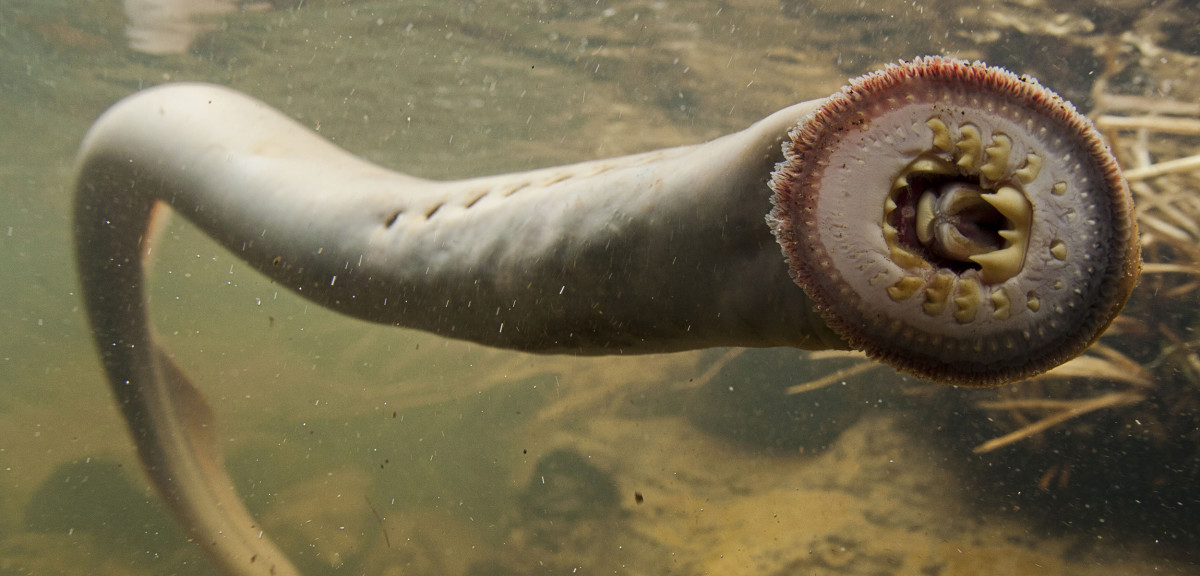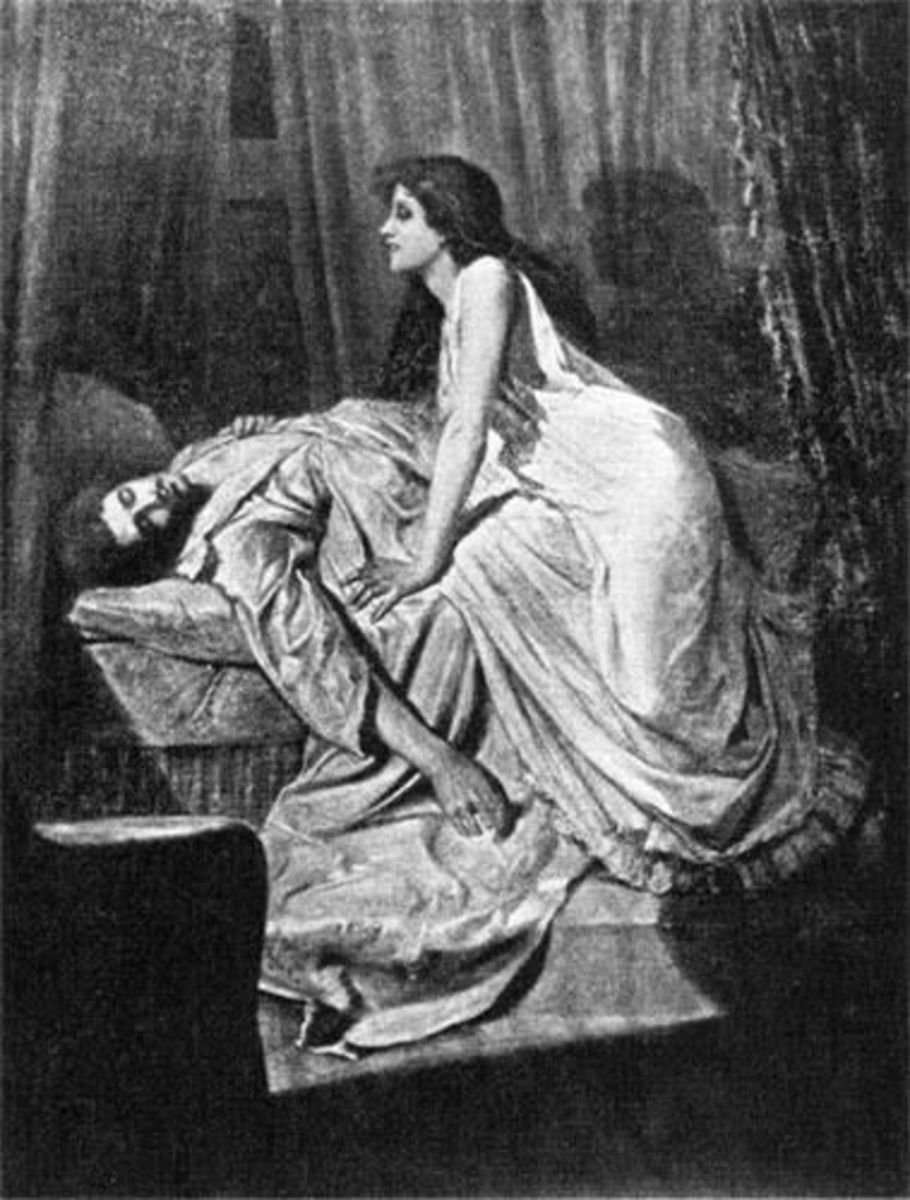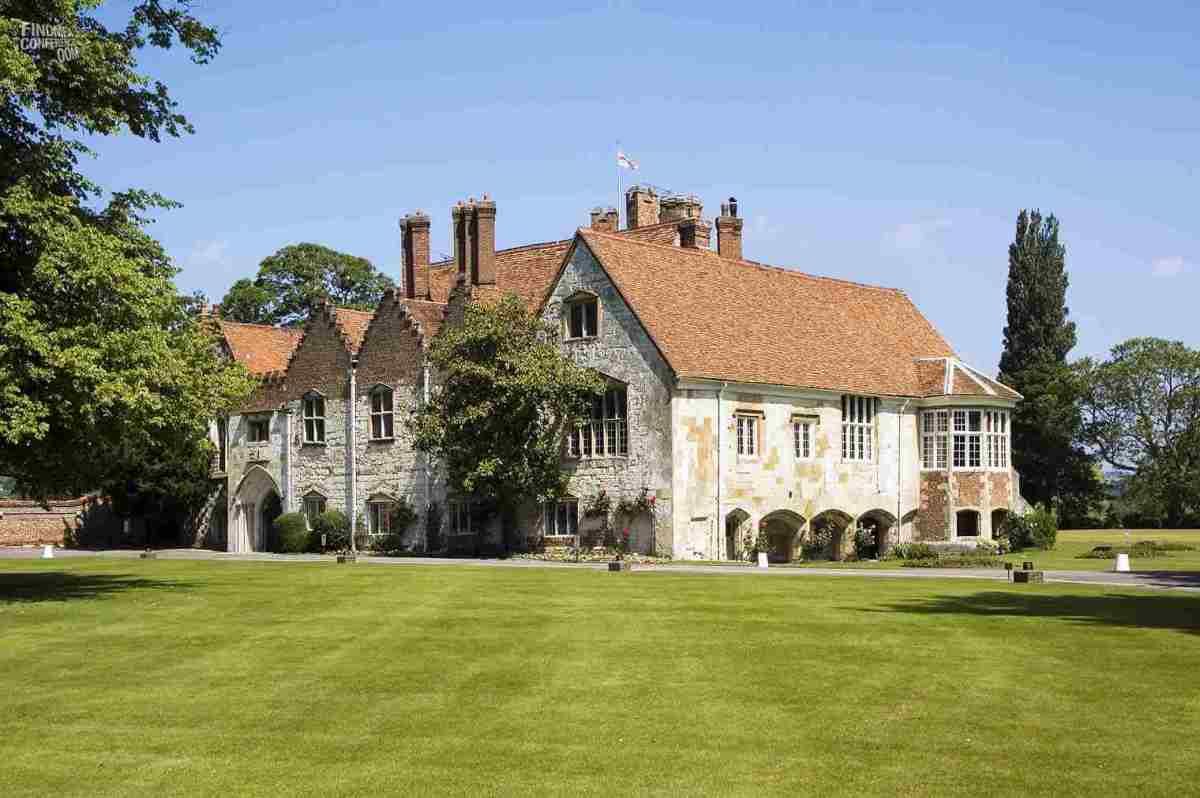Amazing Possibility--Are there Still Dragons and Dinosaurs ?
One day the choice fell on the only daughter
Everyone knows the legend of Saint George who bravely confronts and kills the dragon to save the life of a beautiful princess who is about to be devoured.
Such is stated by Bishop Jacob of Voragine (or de Voragine), who lived in the thirteenth century, in his famous book "Golden Legend", a collection of lives of saints, which was read and reread by devout Christians for centuries and centuries. Hence Jacob of Voragine tells of George of Cappadocia, a Roman military tribune, came one day to the city of Silene, in Libya.
At the town extended a pond "as vast as the sea" from which came a dreadful dragon, who devoured men and cattle, and whose breath even deadly killing those who sought refuge on the walls.
The inhabitants, after a few futile attempts to kill him, were under pressure to offer a meal every day two sheep, and then, failing animals, a sheep and a man, chosen by lot among the unhappy citizens.
One day fate fell on the only daughter of the king. He tried in every way to save the girl from the horrible end, but the inhabitants, being now joined the mourning in every household, forced him to resign.
So the girl, asked the blessing of father, left all alone by the city to meet her destiny, while the people crowded on the walls. It was then that George came on his horse. Seeing her in tears, and seeing the crowd on the ramparts, he asked what was wrong. She invited him in response to run away immediately, but that did nothing but raise the curiosity of George.
While still talking, the monster emerged from the waters of the lake, and soon the girl urged the saint to flee while there was still time. But George left ready for battle against the dragon and confronted him alone. Here James gives two versions of the fight.
According to the first, he severely wounded the dragon, so that the princess was able to take him into town as tame as a her own dog. The people were terrified, but then, calmed by George, they received Christian baptism en masse, after which the Saint killed the dragon.

According to another version
According to another version, George, made the sign of the cross, galloped against the monster and killed him at the first assault.
It took four pairs of oxen to take the body of the dragon in a wagon. George then and his stead galloped off, but not before refusing from the king a large sum of money and telling him to distribute to the poor.
Before leaving the king he gave these four teachings:
to construct the new churches, honor the clergy, hear Mass and assist the needy. On that day had been baptized twenty thousand male adults and the king had ordered the construction of a church dedicated to Our Lady and the blessed George, now a source from which flowed miraculous events. Here ends the tale of the dragon.
Of course it is possible to interpret the legend in a purely allegorical, that is, as a depiction of the struggle between Good and Evil that blends Egyptian motifs (the god Horus, on horseback, slaying a crocodile of the Nile), Persians (the eternal conflict between the principle of light, Ahura Mazda, and that of darkness, Ahriman), Greek (Perseus freeing Andromeda killing the dragon that emerges from the waters of the Red Sea) and Christians (Daciano that provincial governor, for his ferocity in persecuting believers.
However, it is hardly necessary to recall that the German archaeologist, Koldewey, was deeply affected, in the ruins of Babylon, from the findings of reptilian creatures who remembered the ancient dinosaurs and this gave rise to the hypothesis that the ancient Mesopotamians, for their religious rites, reared a few specimens of gigantic saurians, which survived the extinction of their species.
All this without counting the enigma of so-called "Ica stones", in Peru, which depict humans and dinosaurs as if they were contemporary; of which has been shown that a part of the false are definitely, but for another part is not still possible to express a definitive scientific judgment.
Of course, according to our present knowledge the dinosaurs became extinct tens of millions of years ago, but could not find that some species have survived until historic times?
After all, after which in 1938 was rescued alive and well, beautiful waters of South Africa, the fish " Celachantus ", that science 'official' claimed extinct for millions of years, should be very careful to exclude such an eventuality, however remote and improbable it may seem at first sight.
We must now remember the sporadic reports by European travelers and explorers in the nineteenth and early twentieth centuries, the monstrous animals that would live in the swamps and lakes of central Africa.
The sightings have taken place in Cameroon, in Lake Victoria, Lake in Bangweolo (Zambia), then through a wide swath of territory from the Atlantic Ocean to near the Indian ; among the eyewitnesses mention more or less famous explorers , as the Englishman Sir Clement Hill, the German Alfred Aloysius Horn, while others gathered indirect information (tracks in the forest, tales of the natives).
According to these descriptions, especially those of Hill, who said he saw the animal up close, in Lake Victoria, it had approximately the size and appearance of a herbivorous dinosaur. (5)
Now, among the lakes and forests of central Africa and its neighboring regions to the Mediterranean lies the vast Sahara Desert, which would constitute an insurmountable barrier to any large reptile, but in ancient times, it was covered with forests, or at least, grasslands, the drying process was not yet fully completed in the early centuries of the Christian era. The wildlife of today's Sahara was one of the forest or the steppe, as demonstrated directly by the graffiti of the Tibesti and other areas reproducing buffaloes, giraffes, elephants, and indirectly by wild animals captured for the Romans performances of the circus. The lion is now gone north of the Sahara , as is also the hippopotamus Egypt.
Returning to the legend of St. George, the tradition says that ildrago he killed was a water monster, who lived in a vast lake. A truly remarkable coincidence with tales of Hill, Gratz, Schonburgk, Glober. Research in this direction would be interesting, because it would look out the possibility of an allegorical interpretation, but the naturalistic account of the fight between St. George and the Dragon, also if, for obvious reasons, hardly could escape from the field of mere hypotheses. And yet, for the sake of completeness, we also suggest this possibility.
Neither one believes that only come from central news of sightings of monstrous animals like dinosaurs: in fact, they come from all over the world.
In Lake Labynkyr, In Siberia, a giant reptile was spotted since 1953, and the protagonist or witness of the strange encounter was just a scientist: . Ilgeologo Tjerdokherbov.
You can even say that every continent boasts its "water monster", or more than one: the North American monster of Lake Champlain , on the border between Canada and the United States , that of Manipogo (Canada and those slimey Slim (in two different locations in the western United States), South America, the monster of White Lake, Chile, Oceania, the monster Waitoreke, in the South Island of New Zealand. Europe has at least five : The famous " Nessie "the Loch Ness (Scotland), the serpent of Lake Storsjö (Sweden), one of Hvler (Norway) and even two little Ireland to Pooka and the Piast. (10) But "monsters" Europe could rise to six (and more) including, for example, the monstrous serpent that was seen in Friuli, at Sarone, in 1963 and which also dealt with the press, in the summer of 1963. In fact, the full list of sightings would be very long and could go on for pages and pages.
Even in the seventeenth century, a famous Italian writer, a Jesuit Daniello Bartoli (1608-1685), Ferrara, had taken up the tradition for a dragon, in the past, the infested areas of the island of Rhodes, killing men and beasts, until a knight of Jerusalem had not tackled and killed, after having long prepared to trial.
"Quite often you'll hear the famous dragon mentovare apparito in the countryside while the island of Rhodes was held hours by Knights of Malta, and the fearsome beast he was. On a shapeless corpaccio big as a middling horse, the horrible Head of all things dragon big mouth and ripped, very sharp teeth, fiery eyes and blood, spenzolate two big ears, and a breath of mortalissimo poison. Del body, gray back, wings and spuntavan fleshy unghiute, who struggled and ispavento fluttered to, not because the point levasser ground. Everything was stained wheels, green, black, bloody, dark, signs and flowers of poison. Armed then all of a way of leather armor, impenetrable to any weapons; because all was made of tiles and mesh harsh temper, beyond just the big belly and pale yellowish. went on four feet and had two branches armed with terrible nails. Behind it drew a very long tail, which was not an idle point, or unnecessary damage to, and that in it, like a snake, availed to draw over and tighten with more advanced rounds, in addition to severe beatings, with any of those who landed incogliesse.
"Loneliness and desolation was all over the country with a large area around the hill of St. Stephen, on whose slopes he lived in a swamp, where he was born there the same, of a rotting and putrid water scolatavi: show and there around man or animal, the dragon was on the murderess to tear him to pieces, and nourish its meat. Such a monster, that the caprice of 'painters and de' novelists saprebbono nol pretend to fantasize more frightening, was the heart and spirit to attack him from 'Diodato by Gozzone, those who thereafter was the twenty-sixth of this great master of the 'knights. But it was not, therefore, that the desire of glory for himself and the public good (which was liberate the island from a plague is injurious) would make the more courageous than recommended, leading him away as to venture to launch the enterprise. He came from Rhodes Gozzone to his castle, and there apparecchiatosi of a generous horse and two large dogs taken every day for several hours isperimentava and if they fake in front of a dragon, but how could you do more, working in the likeness of truth, and a man dentrovi right to manage it well, raging, rushing, prancing, throwing branches, and making these terrible forces and defenses assaults in which afterwards the true dragon. Meanwhile the knight, with armeggiandogli around good horse, and aizzandogli dogs, take off these fears and gave them courage, and self-trained in a mock skirmish, as then to actually make. So been in that school until he felt able to go out now done with horses and dogs sailed to Rhodes, and secretly to each other (to cause the ban that had there) out only two servants, who left to give by far the fact and nothing else, presented himself to the challenge of the dragon. And well perceived because the facts have long been trained to return percosì beneficial; For, it was enough, but really just.
"Incontrollo to all horse racing with a well-aimed spear, but as he had run into a rock, do not f 'plague, and f' she splinter. So dismounted at the foot 'of the trades was to take the fight shouldered with the shield and sword in hand, face to face with the dragon, who, throughout dirittosi over the last two feet, that's brought him a shot of a branch above the shield with which the rider who won the repaired arm and disarmoglielo, but as God wanted, the assannare that one of those 'brave dogs f' in the part where the dragon's horribly grieved, and at the same time, enter his rider with two penetrating stored inside the throat, beat it to him to 'walk won: indeed the vanquished and the victor, that upon this and to crush him at the weight, both of them fell on the field, but met with great difficulty under the horrible reptile, the valiant King tornossene with the victory with regard to this worthy title of Extintor draconis, who later took to his eternal praise incisogli in the tomb between 'great masters of Rhodes. "(12)
Sure, you can imagine, for Bartoli, the whole episode is nothing but an allegory of man came to the point of death (the rider) who must face the anguish of bodily death (the dragon), training by appropriately spiritual point of view, but it is equally possible, if not probable, that he has picked up a tradition exists on the shores of the eastern Mediterranean, possibly of Byzantine origin, or maybe even older, and that's about it then has built its moral parable . That would bring us back, once again, in the geographic context of Asia Minor and that of Christianity in the East, whence The legend of Saint George and the dragon had been inspired.
If we want to go further back, we found - not without some surprise - that the Roman army of Regulus, landed in Africa (modern Tunisia) during the first Punic War, had been dealing with a huge snake that molested the 'camp of the legions on the banks of the river Bagradha; to the point that, to get right, not enough spears and swords in action was necessary to get even the ballista.
The episode we are dealing lies in 256 or 255 a. C., when, early in the First Punic War, the consuls M. Regulus and L. Manlio Vulsone, defeated a Carthaginian fleet at Cape Ecnomo, had landed in Africa with an army and marched boldly against the enemy capital. Retrieved Vulsone in Sicily by order of the Senate, with 40 ships and Regulus 15:000 men had continued on its own operations, beating the Carthaginians, and inducing them to sue for peace. (13) This was not completed because the Roman commander, emboldened by success , wanted to put an excessively harsh conditions: to the war then suffered a reversal of the Roman army and went to meet a tragic fate. But this is beyond our horizon: we will step back and return to winter 256-55, when the legionary, who landed in Clypea (or Clupea), east of Carthage, were engaged in siege operations of the Punic capital. So says Valerio Massimo that "in Africa, apud Bagrada flumen, tantae magnitudinis anguem fuisse tradunt, ut Atilii Reguli exercitum prohibèret worn." The full step is taken from a lost book of Livy (14) and reads as follows:
"In Africa, on the banks of the river Bagrada, there was a snake of such size that prevented the army of Regulus the use of that water, and many soldiers had been taken from its huge jaws and more squeezed by coils of his tail. throwing arrows that could not hurt him. Eventually it ended with crossbows by raining on his body from all great quantity of heavy stones: In all cohorts and the legions had appeared very object of terror Most of Carthage itself, and when his blood mingled with water from the river and the pestilential exhalations of his corpse infested throughout the region, the army was forced to move the field. He adds Livy that the skin of the snake, which measured one hundred and twenty feet, was sent to Rome. "(15)
This encounter between human beings and a monstrous animal creature is one of the best documented of antiquity, so we focus a little 'about it.
They talk about it, in fact, many Latin authors. Aulus Gellius, Attic Nights, the author of the very famous, for its part, says the report it had found it in the Stories of Fifth Tubero Elio: "Tubero he wrote (...) that having the consul Regulus, during the First Punic War, the place their camps on the banks of the river Bagrada, had to hire a long and bitter fight against a snake of unusual size, who had their abode in those places, after a long struggle of the whole army by crossbows and catapults, having killed , he sent to Rome the skin 120 feet long. "(16) Now, since we know that a Roman foot was a measure of length equivalent to about 30 cm:, one gets that the skin of the" snake "killed by the Legionaries of Regulus was to measure 120 x 30 = 3600 cm., or 36 meters!
Before you ask, to what kind of creature would belong to a skin of this size, we give the word to that, among the ancient authors, which is spread by the greater wealth of detail on this episode, that the Spaniard Paul Orosius (early fifth century . d ..), friend and collaborator of St. Augustine. In his stories against pgagani (Orosii Historiarum adversus paganos septem books), he writes: "The consul Manlius left Africa with the victorious fleet and returned to Rome with twenty-seven thousand prisoners and large prey. Regulus, who had been awarded the 'mandate to continue the war, he marched with the army, and encamped not far from the river Bagrada. Here many soldiers, who had come down to the river for water supplies, were devoured by a snake exceptionally large: Regulus therefore decided to go with the army to fight the beast. But nothing served the javelins and all sorts of projectiles that threw him, for, as if they had hit a "tortoise" formed by the shields sloping, slipping on the darts team monstrous scales, rejected by the body in an amazing way of the beast, who could not to offend the least. Regulus So, seeing that a large number of its soldiers was torn from snake bites or landed by his furious attacks or even stunned by the breath stinking, ushered in action the ballista, which, striking with stones as big as millstones the backbone of the beast, broke to all parts of his body. For this is the nature of the serpent, that while it seems devoid of feet, however, is equipped with scales and ribs, which are arranged uniformly from the top of the neck to the bottom of the belly, and when he moves, he needs to be almost the first second of the legs and claws. (...) This arrangement means that in any body part, from Belly up to the head, the snake has struck, paralyzed and is no longer able to move, since wherever the blow comes, it's breaking the backbone, which imparts motion to the ribs and the whole body. So even this snake, for so long that no spear had been scratched, was immobilized by the blow of a stone, so that the Romans could kill him easily with attorniarlo and weapons. His skin - so they say, one hundred and twenty feet measured - was brought to Rome and for some time aroused the wonder of all. "(17)
Before Orosius and before Aulus Gellius, but a bit 'after Valerio Massimo (who dedicates his work to the Emperor Tiberius), the philosopher Lucius Seneca Annaeus had also remembered the monster of the river Bagrada. "That fierce serpent Africa - wrote - that the Roman legions feared more of the same war, was taken in vain to aim with arrows and slings. He would not even hurt the bow of Apollo. The hardness of the body parts do not nor was scratched by iron nor by any bullet hurled by the hand of man. He was finally crushed under heavy stones. " (18) What conclusions can we draw from what has been exposed?
Perhaps the official science, biology in the first place, should be cautious before you dismiss as "impossible" for clues of survival, in historic times, large reptiles in the legend of St. George and the Dragon, the tale of the dragon of Rhodes and the most recent sightings in many places on the planet could be as many signals. Prudence and pure love of research, for the facts: even if the facts appear to contradict a significant aspect of the evolutionary paradigm is prevalent today. Why give the wrong done to preserve the scientific theories is the surest way to reach out to the bad impression, that - in recent decades - it is not happened a few times
Gallery of Dragons and Dinosaurs!
Click thumbnail to view full-size


